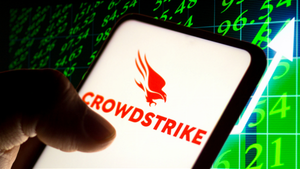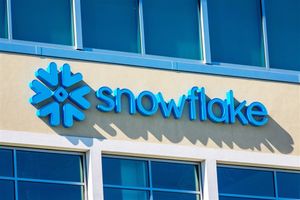
Specialty vehicles contractor Oshkosh (NYSE: OSK) fell short of the markets revenue expectations in Q3 CY2025, with sales falling 1.9% year on year to $2.69 billion. The company’s full-year revenue guidance of $10.35 billion at the midpoint came in 2% below analysts’ estimates. Its non-GAAP profit of $3.20 per share was 3.3% above analysts’ consensus estimates.
Is now the time to buy OSK? Find out in our full research report (it’s free for active Edge members).
Oshkosh (OSK) Q3 CY2025 Highlights:
- Revenue: $2.69 billion vs analyst estimates of $2.85 billion (1.9% year-on-year decline, 5.8% miss)
- Adjusted EPS: $3.20 vs analyst estimates of $3.10 (3.3% beat)
- Adjusted EBITDA: $330.6 million vs analyst estimates of $347.1 million (12.3% margin, 4.7% miss)
- The company dropped its revenue guidance for the full year to $10.35 billion at the midpoint from $10.6 billion, a 2.4% decrease
- Management lowered its full-year Adjusted EPS guidance to $10.75 at the midpoint, a 2.3% decrease
- Operating Margin: 9.7%, in line with the same quarter last year
- Backlog: $13.69 billion at quarter end, down 4% year on year
- Market Capitalization: $7.99 billion
StockStory’s Take
Oshkosh’s third quarter results were met with a notably negative market reaction, as the company’s revenue fell short of Wall Street expectations and year-over-year sales declined. Management attributed this performance to weaker demand in its Access segment, where customers have become more cautious with capital expenditures amid a shifting economic and tariff environment. CEO John Pfeifer highlighted that, despite lower sales volume, Oshkosh maintained double-digit adjusted operating margins, citing strong execution in the Vocational and Transport segments. The company also faced onetime warranty costs in its defense business, which CFO Matt Field said were tied to legacy supply chain disruptions but are not expected to recur.
Looking ahead, Oshkosh’s updated guidance reflects a more cautious stance due to persistent uncertainties in the demand environment, especially for Access equipment. Management pointed to the impact of tariffs and prolonged higher interest rates as key factors prompting customers to delay purchases. Pfeifer cautioned, “We are seeing customers be more cautious in the near term regarding new equipment purchases as a result of tariffs in the current economic environment.” The company expects to offset some tariff costs through cost controls and selective price increases in 2026, but remains vigilant about potential headwinds as it continues to ramp new product launches and manage production challenges, particularly in its Transport segment.
Key Insights from Management’s Remarks
Management attributed the quarter’s results to softer Access equipment demand, successful margin execution in Vocational and Transport, and customer caution amid ongoing tariff and economic pressures.
- Access segment caution: Weaker sales in Access were driven by customer hesitancy to invest in new equipment, particularly as tariffs and higher interest rates created uncertainty. Management noted that while end market utilization remains healthy, many buyers delayed purchases awaiting more clarity on costs and the economic outlook.
- Vocational segment resilience: The Vocational segment, which includes fire trucks and airport products, delivered strong sales growth and improved margins. This was supported by ongoing efforts to streamline production and an increased mix of Build My Pierce stock pumpers, helping to reduce lead times and support throughput.
- Transport segment improvement: The Transport division saw higher delivery vehicle revenue and operating margin expansion, aided by a onetime intellectual property licensing agreement with the U.S. government. Sequential delivery revenue growth and improved contract pricing also contributed to better profitability.
- Tariff mitigation efforts: Oshkosh is actively pursuing cost savings in its supply chain, engineering, and import classification processes to reduce the impact of tariffs. While not all costs can be avoided, management is in early discussions with customers about price increases expected to take effect in 2026 to help maintain margins.
- Warranty charge in defense: The quarter included a onetime warranty expense in the defense business, related to vehicles built during supply chain disruptions in 2021-2022. Management clarified this charge was not related to the new postal vehicle program and does not indicate an ongoing issue.
Drivers of Future Performance
Oshkosh’s outlook is shaped by tariff headwinds, customer spending caution, and strategic cost and pricing actions to protect margins.
- Tariff and pricing dynamics: Management expects ongoing tariffs to remain a significant cost headwind in 2026, with the goal of offsetting a portion of these costs through supply chain negotiations, engineering changes, and eventual price increases. CFO Matt Field estimated full-year tariff exposure at $30–$40 million, with most of the impact expected in the fourth quarter and beyond.
- Access demand uncertainty: The company anticipates continued customer caution in the Access segment, with order timing and volume remaining difficult to predict. While long-term trends such as infrastructure investment and manufacturing reshoring provide some optimism, near-term demand is likely to remain muted until there is more clarity on costs and macroeconomic conditions.
- Production ramp and backlog management: Oshkosh is focused on ramping production of new products, including the Next Generation Delivery Vehicle (NGDV) for the U.S. Postal Service, despite persistent manufacturing challenges. Management emphasized the importance of streamlining operations to reduce the company’s sizable backlog, especially in the Vocational segment, as a key driver of future revenue and profitability.
Catalysts in Upcoming Quarters
Looking ahead, the StockStory team will be watching (1) whether Access equipment demand stabilizes as customers adjust to the new tariff landscape, (2) Oshkosh’s progress in ramping production for the NGDV and other new products, and (3) the company’s ability to manage backlog and sustain margins in the Vocational segment. Additional focus will be on the effectiveness of cost mitigation strategies and the impact of any price increases in 2026.
Oshkosh currently trades at $127.30, down from $137.56 just before the earnings. In the wake of this quarter, is it a buy or sell? Find out in our full research report (it’s free for active Edge members).
Stocks That Trumped Tariffs
When Trump unveiled his aggressive tariff plan in April 2025, markets tanked as investors feared a full-blown trade war. But those who panicked and sold missed the subsequent rebound that’s already erased most losses.
Don’t let fear keep you from great opportunities and take a look at Top 9 Market-Beating Stocks. This is a curated list of our High Quality stocks that have generated a market-beating return of 183% over the last five years (as of March 31st 2025).
Stocks that made our list in 2020 include now familiar names such as Nvidia (+1,545% between March 2020 and March 2025) as well as under-the-radar businesses like the once-micro-cap company Kadant (+351% five-year return). Find your next big winner with StockStory today.
StockStory is growing and hiring equity analyst and marketing roles. Are you a 0 to 1 builder passionate about the markets and AI? See the open roles here.






